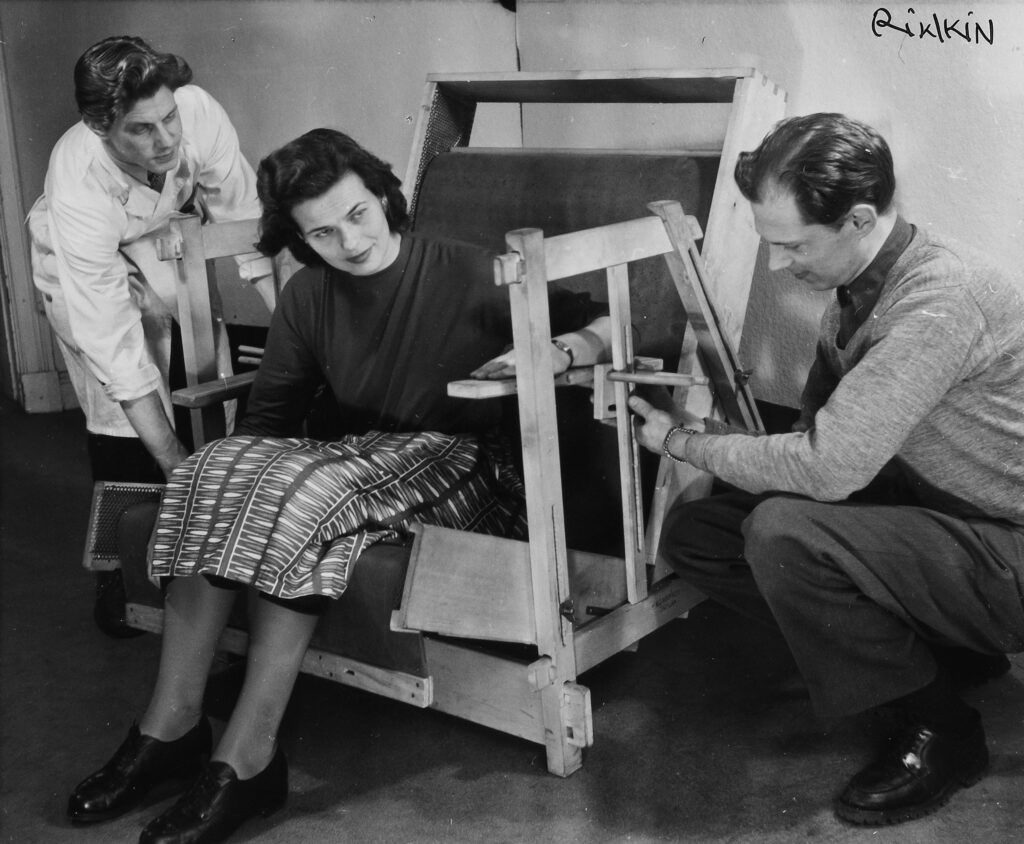Konstfack, now Sweden’s largest University of Arts, Crafts and Design, stems from a craftsmanship tradition and has proved to be highly influential in its various iterations throughout its lifetime. The school was founded in 1844 as a Sunday drawing school for craftsmen by the artist and ethnographer Nils Månsson Mangelgren. In 1846, the school was transferred to the newly established Svenska Slöjdföreningen (Swedish Society of Crafts and Design) and operated from then on under the name Svenska Slöjdföreningens skola. In 1859, the school changed names again to the Tekniska skolan (Technical School).
The curriculum, which was progressive in the historical context, with a clear orientation toward the British Arts and Crafts movement, came increasingly under fire from the turn of the century. The advocates of a modern design in the spirit of the ideals propagated by the Deutscher Werkbund (German Association of Craftsmen) believed that the teaching practiced at the Tekniska skolan, which focused on a history of styles and studies from nature, was no longer equal to the challenges of the industrial age. In reference to, among other things, the experiences of the Bauhaus, in the early 1930s they called for a fundamental reform of the school. The reform plans, which were put on hold during World War II, eventually resulted in 1945 in the school’s re-establishment as the Konstfackskolan, which offered two- or three-year education programs in various industrial design disciplines. The founding director Dag Melin and his successor from 1946, Åke Stavenow, implemented a curriculum that enlisted diverse materials (decorative painting, sculpture, ceramics, furniture, metalwork, advertising and book making).
Stavenow appointed new teachers with a taste for experimentation. The teaching was now dominated by an abstract design vocabulary and a shift towards new materials; the artistic disciplines were encouraged. As at the Bauhaus, there were both teachers who were responsible for the students’ artistic and professional development and craftspeople, who taught the different techniques. With the new school building by the architect Gösta Åberg which was inaugurated in 1959, for the first time the students had adequately equipped workshops at their disposal, in which the lessons were held from then on. In 1978, the Konstfackskola was awarded university status and as a result, the school was run along more academic lines. The heads of the various departments now had the status of professors; in addition, the share of theory- or history-based classes in the individual courses was sharply increased. A separate department for industrial design was also established for the first time.
The new format “Färg och Form” (color and form) spearheaded by the painter Gösta Wessel gained a prominent role in the reorganization of the educational program. Based on the preliminary course at the Bauhaus and other modern design schools, the course aims to hone the students’ awareness of fundamental aspects of the perception of color and form. To commemorate its 150th anniversary, in 1993 the school was given its current name, Konstfack. In 2004, the school relocated to new premises.




